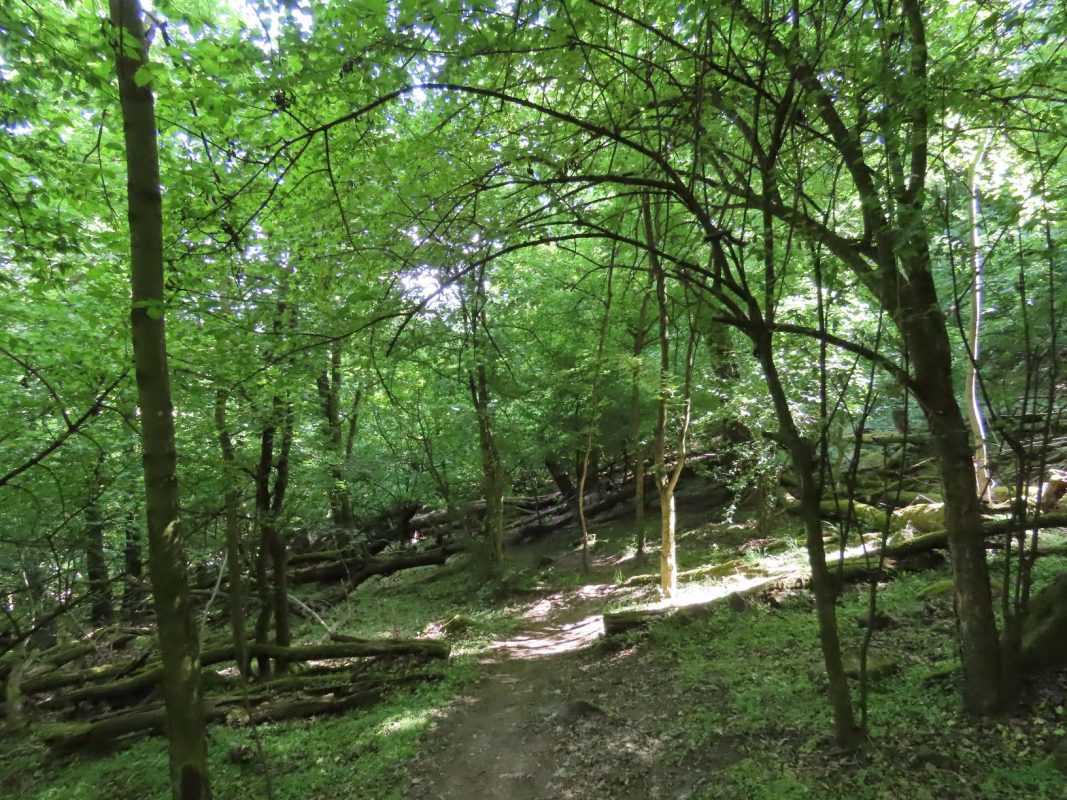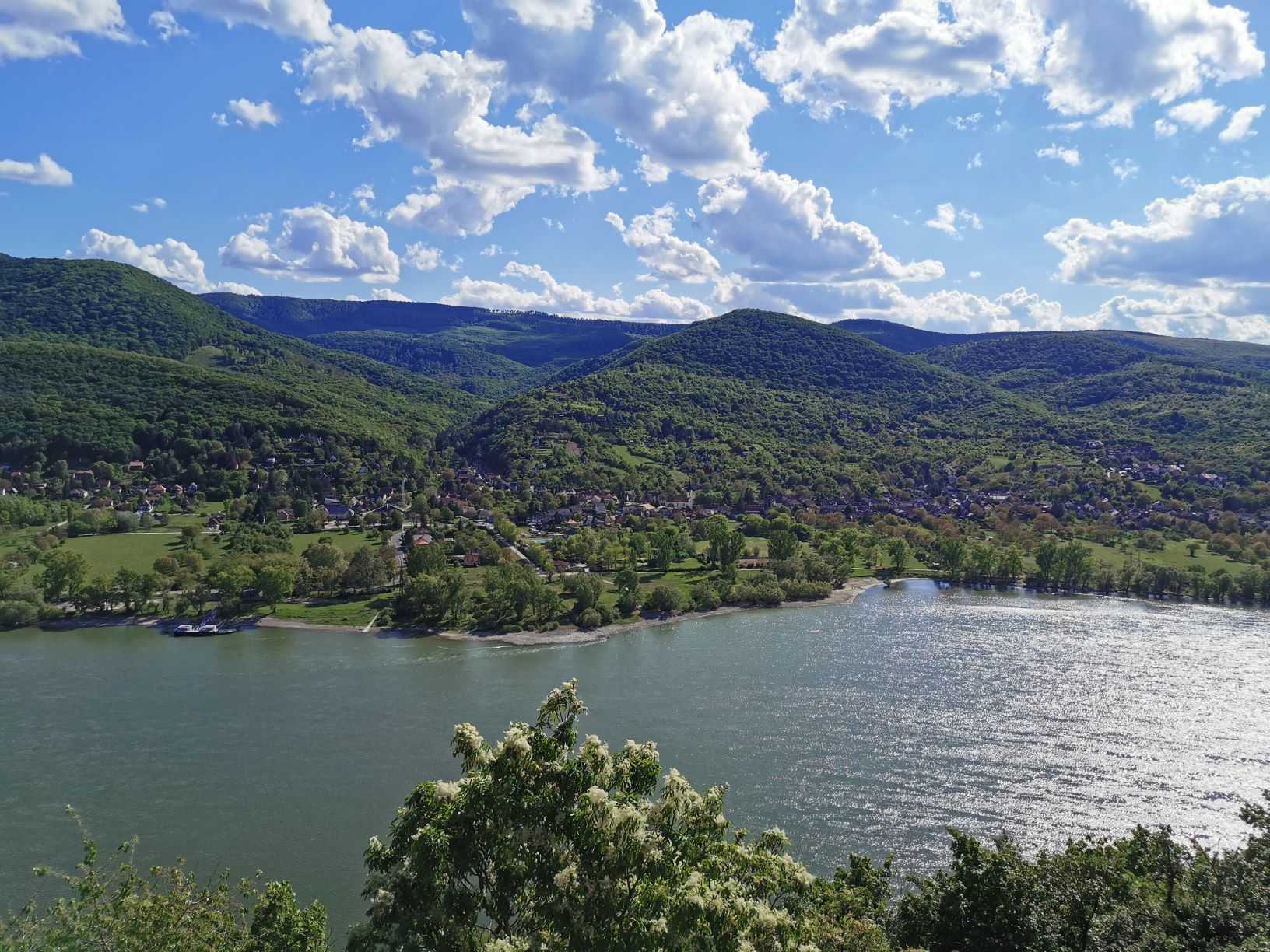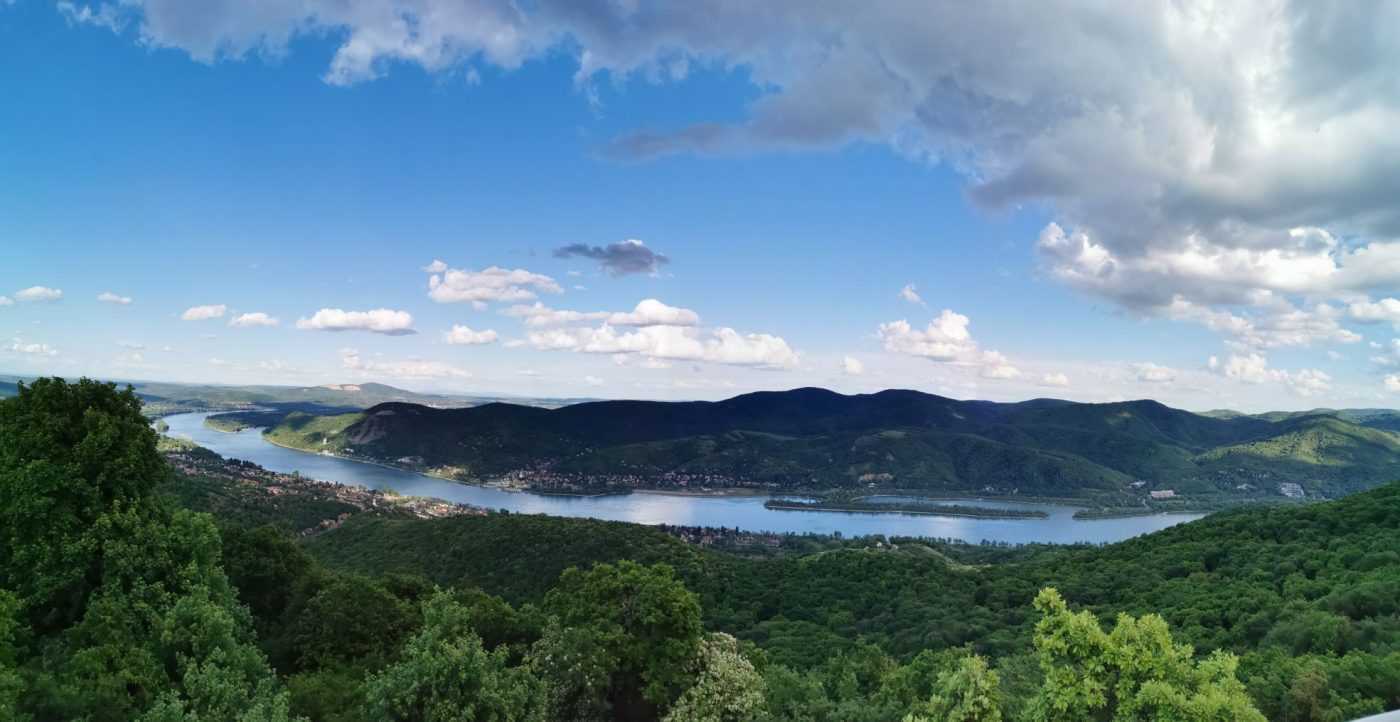The Danube Bend (Dunakanyar) is one of the most popular tourist destinations in Hungary, which represents the section of Budapest between Esztergom and Esztergom. Not only its natural but also cultural and historical heritage that attracts tens of thousands on weekends. It is enough to think only of Visegrád Castle with the stunning panorama, about which I already wrote here. Well, the good news is that by lifting the covid restrictions, we can finally move freely within the national borders and can make a big trip. The big one is literally understood because, in order to get to the sentinel in the title, you have to climb a mountain. However, there is nothing to worry about, you can do this on foot and without any hiking experiences.
The most beautiful view of the U-shaped section of the Danube Bend opens from the height of Dömös and Nagymaros. You can choose to climb one of the highest peaks of the Visegrad Mountains, the Prédikálószék (639 m), or climb to the Hegyes tető (482 m) on the opposite side, at the top of which is the Julianus lookout stands as a sentinel. I chose the latter because I was curious about other attractions affected by the tour from Nagymaros.
The total length of the moderately difficult tour is 12.9 km, which conveniently can be done in 5 hours, but this duration already includes the lunch and photo breaks. There is a total elevation is 420m, where fallen trunks and steep slopes make the route sometimes difficult, so it is only worth going on the road with proper hiking shoes. Despite the difficulties, it is worth climbing to the top of the mountain surrounding Nagymaros, where I brought you a couple of pictures.
The tour starts from Nagymaros, where after leaving the train station, the cottages, and old abandoned wine cellars you arrive at a downhill, that gives the thigh muscles a warm-up. You can drive up the paved road for a while, but it doesn’t make sense, because that’s not the way you’re coming down on the way back. So the best option is to park near the church if you arrive by car, or if you take the train, you can start the tour right from the station.
After the successfully climbing of Szamaras (Donkey) Street, there is already a small reward in the form of the Gánti Tibor plaque. The former chemical engineer, whose name is also tied to the foundations of the artificial production of life, often referred to here in the Danube Bend. Watching the flowing river from the edge of the cliffs with the Visegrád Castle peaking in the background, and the tiny houses of Dömös on the opposite side, I understand why professor Gánti liked to sit here.
After the short detour, continue your way on the yellow cave sign towards the Remete (Hermit) Caves. This was the first point when I asked if we were surely going in the right direction? The road doesn’t look like a hiking trail. On the crumbly volcanic soil, the terrain rises continuously (350m) and you have to jump through the fallen trunks too. In any case, the Ördög (Devil) Mountain is quite tricky in terms of hiking, and in some places, you can really see the devil himself painted on a wall. But don’t be afraid, he’s completely harmless.
Walking along the top of the mountain, you arrive soon at the Remete Caves, which look directly to the Danube and Dömös. The formations of 10 cavities are only semi-natural, as they were hollowed out from existing reeds by humans. In the Middle Ages, Benedictine monks used this place as a rock church, the traces of which can still be discovered in the “side ships”.
Legend says in the late 1800s, a hermit lived at the top of the mountain, whose donkey used to move up and down the hill to the Danube independently with wet buckets (so the name Donkey Road makes sense). Locals often asked the hermit for advice or sent him a donation with help of his donkey. According to the sad story, the donkey tripped one day and fell into the Danube. The hermit waited in vain, but he didn’t come back, and he died, too. Either way, the caves are interesting, although I expected more from them.
After the Remete Caves, a steep climb takes you up to the 484 m high Hegyes tető, where on the bench in memory of Lili Miklós it is nice to take a little break. Once you got here, there is a straight road that leads through beautiful forests to the well-deserved lookout point.
If you see some deep holes surrounded by railings in some places, it is not by chance, because the stones from which the Julianus lookout was built in 1939 by the Association of Entin Tourists were mined here. The lookout at the top of Szent Mihály Hill is nicely renovated and mostly reminiscent of a medieval bastion. The 15-meter-high stone tower is actually a friendly sentinel that is constantly open to visitors.
The interesting thing about the building is that there is also a central part that is completely covered. Going up the spiral staircase, it’s good to stop here a little bit, especially for me as I have fear of heights, but you can just have a lunch break here too. However, after you’re done with this, let’s go up to the top of the lookout, from where the view is amazing. The panorama is dominated by the Danube at 270 degrees with Visegrád Castle and Salamon Tower in the background, while on the other side you can cast distant glances at Börzsöny and Western Slovakia.




























